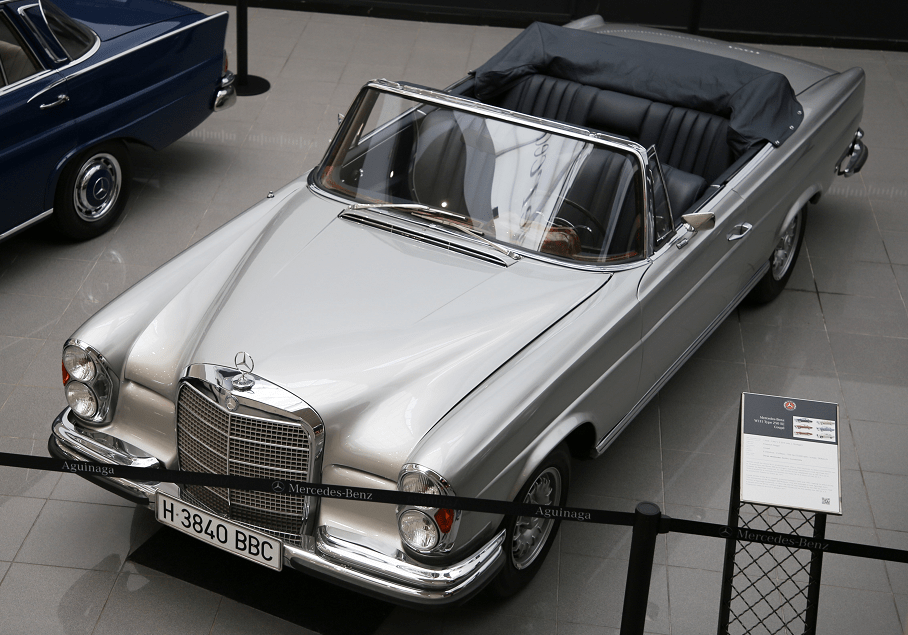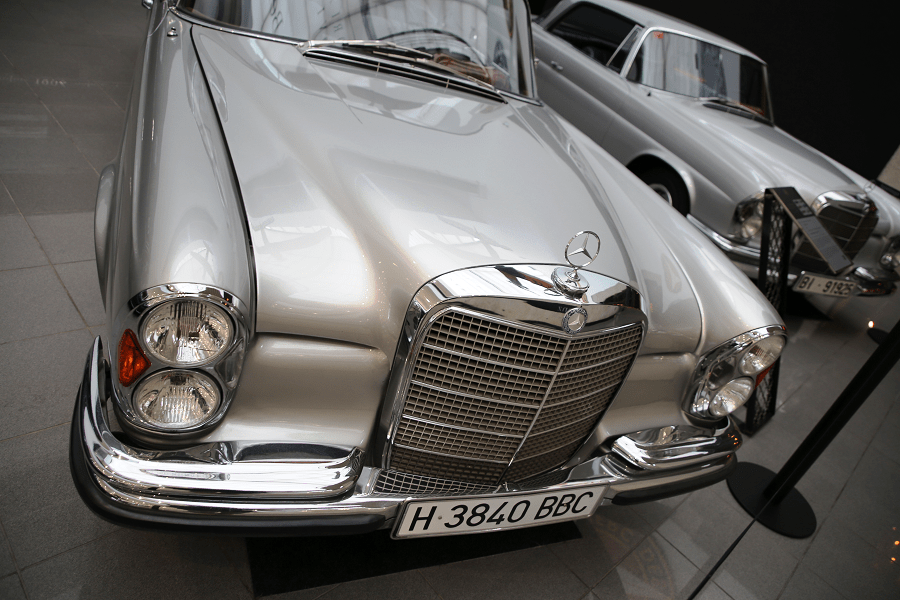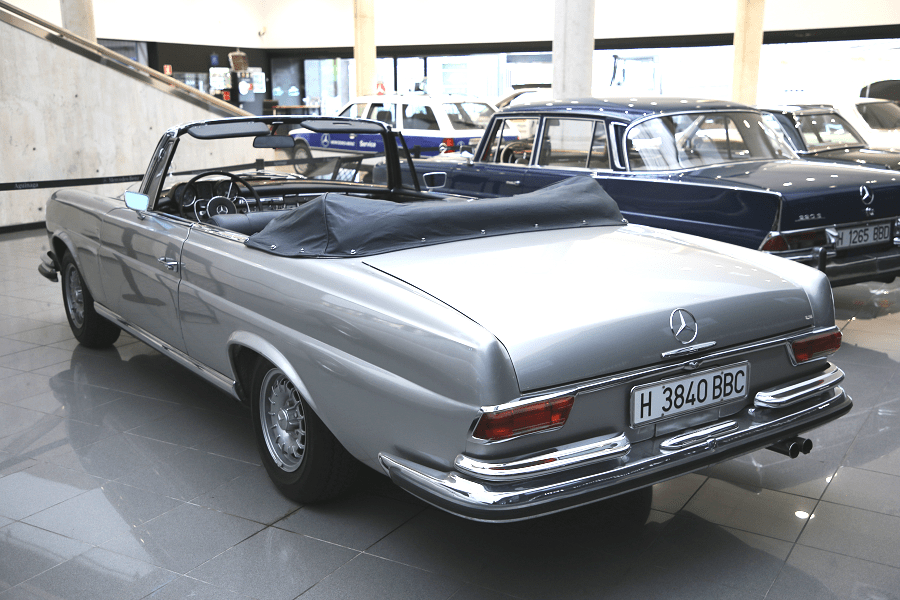The silver Mercedes-Benz W111 Type 250 SE Cabriolet. Production: 1965-1967, cabriolet with two doors, engine: six cylinders, 2496 cc, 150 HP, 193 km/h
The Mercedes-Benz W111 was a chassis code given to a range of Mercedes-Benz vehicles produced between 1959 and 1971, including four-door saloons (1959-1968) and two-door coupés and cabriolets (1961 to 1971). Their bodywork featured distinctive tailfins that gave the models their Heckflosse nickname — German for “fintail”.
Introduced with a 2.2-litre inline 6-cylinder engine, the W111 spawned a pair of variant lines which bracketed it in 1961: downscale entry-level inline 4-cylinder engined vehicles sharing the W111 chassis and bodies, designated the W110; and the W112, a high-end luxury saloon built on the W111 chassis with its body but exclusive features, elaborate appointments, and the Mercedes-Benz 300d Adenauer’s fuel-injected 3-litre M189 six-cylinder engine – at the time the company’s largest.
Somewhat confusingly, both the W111 and W112 lines included vehicles with different Paul Bracq-designed bodywork, the 2-door coupé and cabriolet.
Coupé and cabriolet
Design of a replacement for the two-door Pontons began in 1957. Since most of the chassis and drivetrain were to be unified with the saloon, the scope was focused on the exterior styling. Mercedes chose the work of engineer Paul Bracq, which featured a more square, subtle rear-end treatment, more evocative of the later squarish styling of the subsequent W108/W109 than the sharp-edged tailfins of the saloon.
Production began in late 1960, with the coupé making its debut at the 75th anniversary of the opening of Mercedes-Benz Museum in Stuttgart in February of the next year.
The convertible followed at the Frankfurt Auto Show a few months later. Almost identical to the coupé, its soft-top roof folded into a recess behind the rear seat and was covered by a tightly fitting leather “boot” in the same color as the seats. Unlike the previous generation of two-door ponton series, the 220SE designation was used for both the coupé and convertible; both received the same version of the 2195 cc M127 engine. Prices in 1962 were 32,500 for the coupé and 36,000 Dutch Guilders for the cabriolet. Options included a sliding sunroof for the coupé, automatic transmission, power steering, and individual rear seats.














